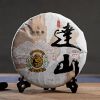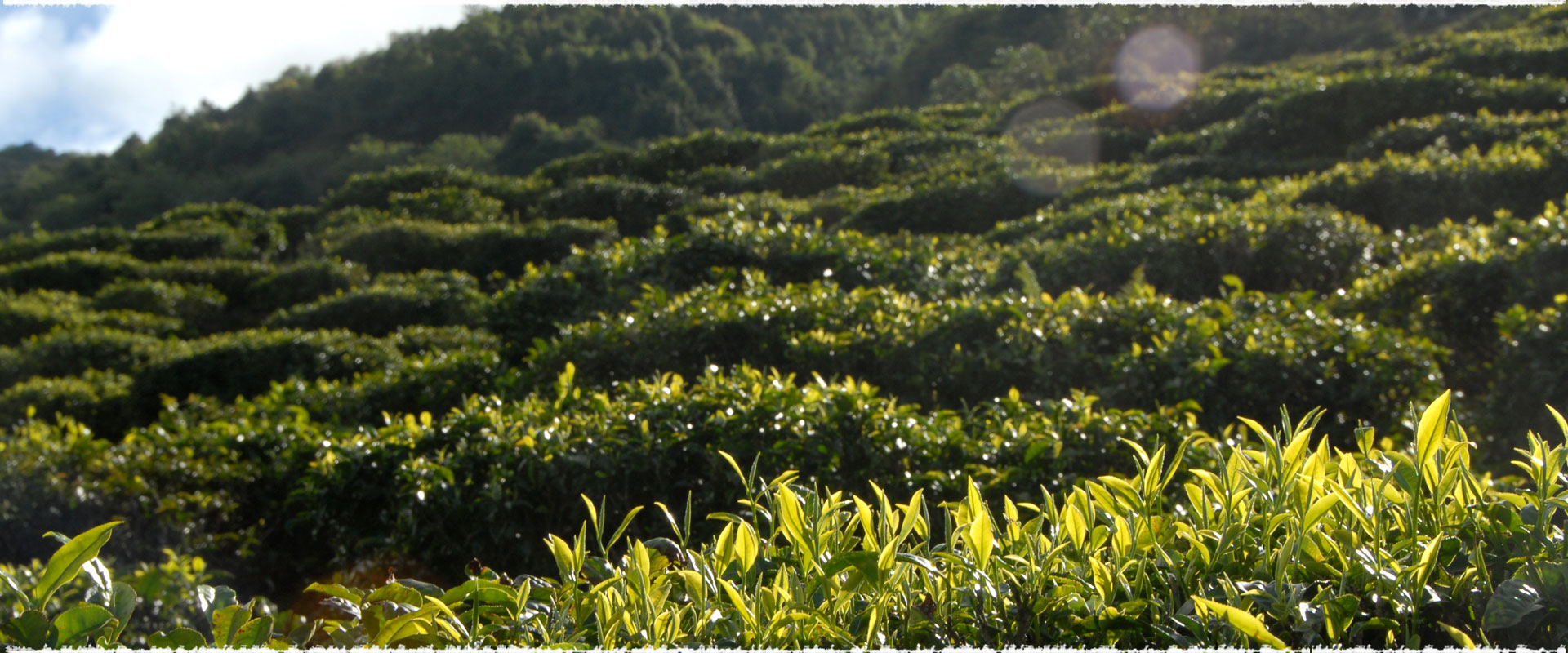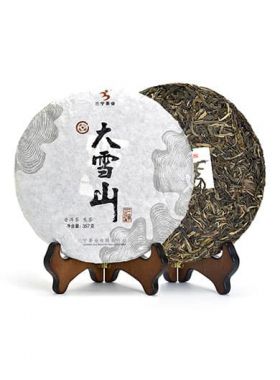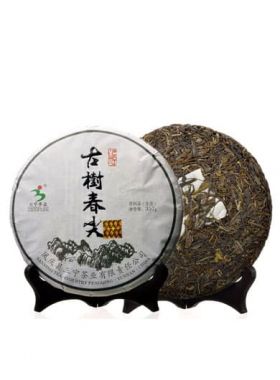-
Fast ShippingFree shipping for orders above $40
to most countries. -
Secure PaymentPay with Paypal, Credit Card …
-
Carefully SelectedFrequently Visit Tea Gardens.
Taste Repetitiously -
15 Days RefundNo Questions Asked
Refund Policy
Chun Hao Ancient Tree Raw Pu-erh Cake Tea 2013
Soft and smooth, rock candy note
Soft and smooth, rock candy note
| Origin: |
Fengqing County, Lincang City, Yunnan Province, China |
|---|---|
| Harvest Date: |
May 10 – May 25, 2013 |
| Production Date: |
June 18, 2013 |
| Plucking Standard: |
One bud with one leaf, few one bud with two leaves |
| Net Wet: |
357g |
| Dry Leaf: |
The strips are stout and even, covered with pleny of white hairs |
| Aroma: |
Pekoe aroma, Chen Xiang |
| Liquor: |
Bright yellow in color |
| Taste: |
Taste soft and sweet, mellow and smooth with sense of viscosity |
| Tea Bush: |
Fengqing Large-leaf Tea Trees (200-500 years old) |
| Tea Garden: |
Lida& Dasi Tea Garden |
| Caffeine: |
Low caffeine (less than 10% of a cup of coffee) |
| Storage: |
Store in cool, dry place away from sunlight; keep ventilated |
| Shelf Life: |
The aged the better |
Angel's Comment:
The appearance is full of pekoe which is very beautiful, and it has a thick feeling to drink.
This Chun Hao Ancient Tree Raw Pu-erh is made with well-selected Yunnan large-leaf raw materials, with one bud and one leaf as the picking standard. The surface of the cake is full of white fuzz, and the buds and leaves are clear and very beautiful. This tea was produced in 2013. Years of aging has given it a softer and mellow taste. The delicate raw materials make it hardly bitter and astringent. The sweet, soft and mellow taste is very pleasant throughout, which is very pleased.
 |
Cup Method |
 |
Chinese Gongfu Method |
 |
Teacup: 12oz / 355ml |  |
Gaiwan: 3.8oz / 110ml |
 |
203℉ / 95℃ |  |
203℉ / 95℃ |
 |
5g Tea |  |
7g Tea |
 |
Brewing time: 2 - 3 mins |  |
9 steeps: rinse, 15s, 15s, 15s, 30s, 40s, 50s, 60s, 80s, 120s |
| Rinse time is around 5 seconds |
The Lida and Dasi tea gardens sit within the beautiful Mengyou Town in Fengqing County, Lincang City, Yunnan Province. The elevation here averages 1980 meters, though can exceed 2100 meters in some places. The climate is mild and humid with an annual average temperature of about 16.2℃, and the unique natural conditions here result in land perfect for growing tea. This combined with the native large-leaf species and the superb tea processing knowledge has allowed Fengqing tea to enjoy a great reputation since ancient times.

A born-and-bred Yunnan farmer, Mr. Zhou has been avidly contributing to the tea business for more than 20 years. A short chat with him made his passion for using traditional tea crafting processes apparent; he values the essential quality inside the tea leaves, and says that his experience comes from spending most of his time in the tea gardens along the mountains. Mr. Zhou is passionate about bringing out that internal quality of the tea to share with tea lovers around the world - and also claims that the best environment for growing the perfect tea is in Fengqing.
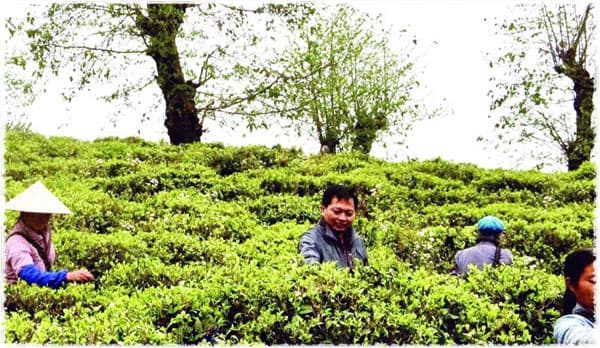
This pu-erh tea is produced in Fengqing, located south of Dianxi Longitudinal Valley. Fengqing is a country in the northwest of Lincang, one of the four famous pu-erh production areas (along with Xishuangbanna, Pu’er, and Baoshan), and is one of the original birthplaces of tea in the world. It is also famous for being the hometown of Yunnan black tea. Fengqing has a long history of planting, producing, and drinking tea, and contains a beautiful throng of mountains webbed with rivers.
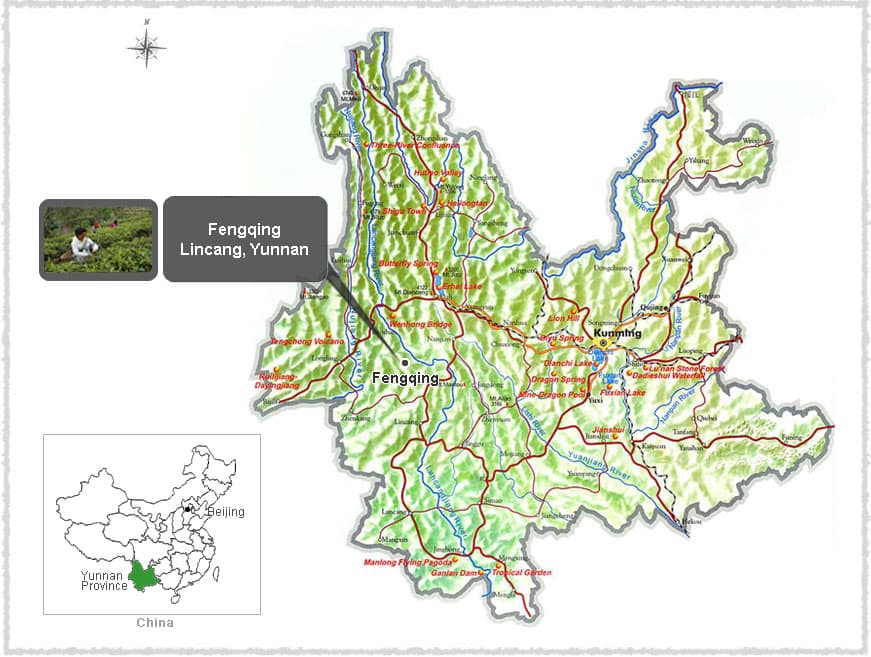
This pu-erh tea is made from the Fengqing large-leaf subspecies of the Yunnan large-leaf. It propagates sexually and takes the form of an arbour tree, meaning that it can grow to over six meters tall. 1984, the Fengqing large-leaf species was certified by the Chinese government as a national grade. It contains an abundance of tea polyphenols (30.2%) and catechins (13.4%), as well as 2.9% amino acids and 3.2% caffeine.

Pu-erh tea is one of the oldest types of Chinese tea, with a history stretching back over 1,700 years to the Eastern Han Dynasty, when the tea was called Jing Cha. It is named after the town of Pu’er in Yunnan province, which was the earliest trading center for this tea. In its early history pu-erh was used as a bartering currency throughout southwest China, and there the famed Cha Ma Gu Dao - or Tea Horse Road - was built especially to transport this tea through the Himalayas to other countries and areas in Tibet.




